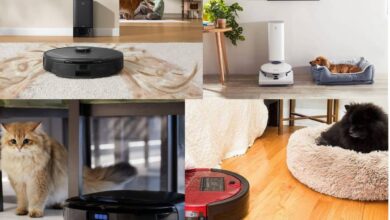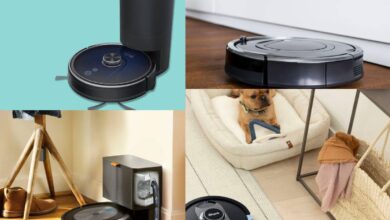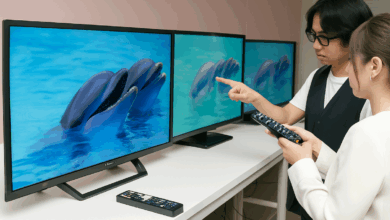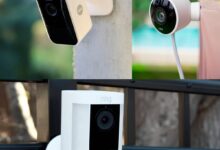5 Best Smart TV Brands Preferred The Most in 2025

As we move into 2025, AI and quantum sciences dominating the headlines, our offices have come to a startling realization concerning smart TV brands. First off, we consider ourselves grounded individuals, guilty of the occasional nerdgasm when a new display technology arrives to improve screen quality, but we’ve been prone to the occasional bit of brand snobbery. Just like everyone else, we’ve stuck stubbornly, and ignorantly, to the iconic smart TV brand names, viewing less known manufacturers as underdogs.
That’s all changed. There’s a more even-handed approach seeping into the office now, with the ‘we’ll stick with the big players’ mentality gone the way of the dinosaur, extinct and relegated to the past. Frankly, the recent influx of display wizardry from budget brands like Vizio and Hisense has taken us all by surprise, offering technologies that prove the word affordable doesn’t have to mean cheap. Playing with the big boys, like Samsung and Sony, these vendors deserve every bit as much consideration as a buyer’s final selection, loaded up in the back of your truck in that features-blaring slender cardboard box.
If the reasons for our objectivity-based perspective aren’t yet obvious, here’s the big scoop—picture quality and streaming performance are not necessarily linked to brand recognition. A budget smart TV, one of the best of 2025, can be every bit as feature-packed and built to last as one of the iconic consumer technology names.
Since a great product isn’t defined by its legacy, but by its present and future capabilities, we’ve decided to break down the best smart TV brands 2025 consumers should keep on their radar. We begin with a solid middleman, a name that straddles the budget and premium market with great finesse. Let’s talk about LG, the ever popular South Korean powerhouse electronics giant that delivers in-demand smart TVs without breaking a sweat, or your bank account.
Affordable LG Smart TVs – Premium smart TVs without the premium price
Standout Series – LG OLED evo series and LG QNED smart TVs.
Why we can’t resist – Advanced display technologies like OLED and QNED. Inbuilt AI processors for sound immersion and picture upscaling. Ultra-large screen sizes. NanoCell technology. LG Game Optimizer mode. Web OS.
It’s the sheer spectrum of wireless streaming products available from the South Korean electronics giant that had our staffers scrambling to organize themselves. The LG 75” 75UT7000PUA offers what the budget conscious manufacturer colorfully refers to as a ‘Galaxy of Entertainment’ on the intuitive Web OS streaming platform. Content is fast to load, displays in 4K, and SD streams upscale via the inbuilt α5 AI Processor Gen 7 engine. Audio is equally clear and booming, using a 2.0 channel speaker system or the eARC HDMI channel to hookup a soundbar that can decode Dolby Atmos sound.
Meanwhile, at the other end of that far-flung series of excellently built smart TVs, the LG OLED77G4WUA 77” OLED evo AI G4 gives an already stellar 4K display a premium boost by incorporating Organic LED display technology, a palette of 8.3 self-lit pixels that never bleed or halo. Every black and subtle color gradient perfectly rendered. If that’s not good enough, there’s also a QNED, or Quantum NanoCell Emitting Diode series, delivering exceptional color fidelity and stunning contrast levels.
While the regular 4K ultra HD sets are good enough for the majority, LG OLED and QNED smart TVs come with super low latency and higher refresh rates of 144Hz. G-Sync is also a literal game changer, optimizing the gameplay experience. Ultimately, from affordable big screens to high-end overachievers, LG has a model that fits any budget, and lifestyle.
Room for improvement – Running on Web OS, their streaming capabilities are well provided for but can be a tad laggy at times. One Reddit post mentions buggy networking and remote control operation as well, but our testers had no issue.
Samsung Smart TVs – Still the go-to for picture and streaming performance
Standout Series – Samsung Neo QLED and Class Crystal UHD sets.
|
$1,497.99
|
$799.99
|
Why we can’t resist – Free channels on Samsung TV Plus. Mature ultra HD tech. A knack for building appealing cases. High-end Neo QLED and OLED screens. Not to mention the snappy Samsung Tizen streaming interface. AI optimized viewing.
Even though the previous brand made a big splash as our opener, it’s a Samsung smart TV that first drew a crowd from our office interns. They were treated to the QLED, Quantum Dot LED display on a loaner Samsung QN75QN90DAF Neo QLED 4K smart TV we’d set up in a darkened office. The 75” screen loaded Lord of the Rings: The Return of the King on our Sony UBPX700 ultra HD 4K player, presenting the movie on the huge screen in pure cinematic color via Neo Quantum Dot HDR +.
The NQ4 AI Gen2 Processor took over, providing full decoding of Dolby Atmos, pulling out details from shadowy Mordor, yet never experiencing display washout when the fires of Mount Doom threatened to overwhelm finer details. That’s not to say, of course, that Samsung locks their focus into these high-end QLED and OLED screen lineups. Mid-tier Crystal display technology proves thoughtfulness for customers with slightly smaller budgets, then there’s the lower end OLED range too.
It’s rare to find an organic LED smart TV for under the often targeted $1k price point, but the 42” Samsung S90D Gaming panel manages this remarkable feat, all while adding desirable gaming features like a 144Hz refresh rate and an AI enhanced Game Mode as well. Added to that, there’s the ubiquitous Samsung Tizen Streaming interface. Game into the wee hours, then relax for an hour with an episode of Bridgerton. Not only are these TVs loaded with OLED and Quantum Matrix mini LED picture fidelity, they’re built to please demanding gamers, too. Premium audio hardware is also more common in their mid to high end cases, adding more drivers so that Dolby and DTS soundtracks boom and crack as the action mounts.
Room for improvement – High-end Samsung TVs, especially Neo QLED models, can be on the expensive side. Occasional complaint about Smart OS bugs.
Elite Sony Smart TVs – The smart TV gold standard
Standout Series – Bravia XR QD-OLED series and Bravia 8 OLED smart TVs.
|
$3,498.00
|
$648.00
|
Why we can’t resist – Sony Bravia sets the bar high. Cognitive Processor XR. QD-OLED technology. Perfect blacks. Bravia Core and Sony Pictures Core. Low latency gaming, especially when paired with a PS5. Google TV. Dolby Vision.
When viewers in search of best-in-class visual quality dip into the prestigious listening and viewing rooms provided in a premium electronics retail store, they pass Sony receivers and speaker systems, eventually arriving at a wall mounted with the very best Sony smart televisions. For example, the Sony Bravia QD-OLED combines the best of Quantum Dot and OLED know-how, producing visuals that are second to none. Using the 65” XR-65A95L model as our prime pick, the slim form factor of the Sony A95L turns on to reveal a a gorgeously rich color palette and inky deep blacks, all of which are sent across the big screen with silky smoothness thanks to the Cognitive Processor XR display engine.
Apps were readily catered for on all the sets we tested. Lower and higher priced models used Google TV, adding Google Assistant into the mix using a microphone built into the remote control. Even the more affordable smart TVs took this path, the Bravia 3 series using its 43” display to get every colored streaming pixel streaming with perfect clarity, thanks this time to a Triluminos Pro and the proprietary 4K HDR Processor X1 screen optimizer. Sony, just like Samsung, knows how to insert bleeding-edge display engines, working in the background to maximize contrast, deliver vibrant colors, and reduce bleeding image effects. The processors, and the displays just scale upwards as the cost of the TV rises.
At the top of the processing mountain, the Cognitive Processor XR simulates the human mind, making sure picture elements are tuned to the way we perceive them. Our testers might have viewed this claim as typical sales spin before seeing what the Sony Bravia A95L was made of, but after seeing those true-to-life pictures on-screen, our skepticism turned to grudging admiration. We even fired up Mad Max: Fury Road, watching as XR OLED Motion removed any signs of motion blur during a chase scene. As for sound, Dolby Atmos surround audio roared with superb detail from the 2.2ch speakers, and the entire screen joined in, vibrating with a feature called Acoustic Surface Audio+ to boost sound quality.
Room for improvement – Practically perfect in every way, Sony smart TVs are costly investments. There are budget models, but the focus is clearly on their premium gear.
Rising Star TCL Smart TVs – Quality visuals without the hefty price
Standout Series – QD-mini LED smart TVs and QLED Pro.
|
$1,120.45
|
$1,654.99
|
Why we can’t resist – Sub $1k QLED picture quality. 120Hz refresh rate on many models. Deep Learning AI media optimization. Google TV smart OS. Dolby Vision and HDR10+ certification. QD-Mini LED technology.
Office researchers dived into the user-driven depths of Reddit expecting scathing comments, but TCL screens actually receive widespread approval, bar the occasional snarky remark over build quality. Their brand recognition figures are definitely trending upwards. We tested the TCL 75″ Q Class UHD QLED Smart TV, model 75Q681G. Apart from anything else, it was found on sale at under $1000. That’s a 4K smart TV with a massive 75” Quantum Dot panel for under $1k. Impressive, there’s no doubt about it.
This isn’t even the flagship series. We found those by sifting through their QD-mini LED smart TVs. By introducing mini LED backlighting behind the Quantum Dot filter, contrast and color accuracy are improved, while halo effects and image bleeding is immediately nixed. The TCL 75″ Q Class 4K smart TV, model 75QM751G uses this technology, adding features like a 120Hz refresh rate and the TCL AIPQ™ PRO Processor to push their brand identity to lofty premium performance levels that are normally reserved for names like Sony and Samsung. Add to this Google TV streaming smarts, Onkyo tuned audio drivers, and IMAX enhanced picture certification, plus HDR Ultra and Dolby Vision IQ, then we had very little to complain about. Pass the popcorn, the movie’s about to start.
With that review team mesmerized by QD-mini LED picture candy—we’ll have words with them later—we were left to review some of their entry-level smart TVs. Yet another 75” model, the model 75S551G TCL S Class Smart TV didn’t have all of the visual wizardry on offer via QLED or DQ-mini-LED panels, but its 4K screen displayed sports and gaming content with satisfactory performance. Google TV provided the gateway to thousands of streaming apps again, Netflix and Disney+ included, and if the content had a Dolby Atmos soundtrack, this television delivered the decoding muscle. Inexpensive though these lower models may be, they don’t lack for high-end features.
Room for improvement – Build quality on entry-level models is plasticky. Quality control issues have been reported. Streaming lag. Gaming latency problems.
Feature-Packed Hisense Smart TVs – The budget-Friendly buyers choice
Standout Series – U8 and U6 series mini-LED smart TVs.
|
$1,420.99
|
$795.99
|
Why we can’t resist – User commended ULED screens. Mini-LED technology. QLED color accuracy. AI processing engine. GameBar for demanding player visuals. Dolby Vision IQ and Atmos. Comprehensive HDR support. Google TV.
If it’s a competition between Hisense and TCL for most innovative, budget-friendly brand identity, it looks like the competition is neck and neck. Separating the two a little, Hisense have their ULED screens, but this is not an acronym. It’s more an umbrella label covering mini-LED color and contrast authenticity. Edges are crisp and halo effects are non-existent. Everything is true-to-life and lacking motion blur, thanks to variable refresh rates that top out at 144Hz. Taking advantage of those rich screen offerings, Google TV streaming comes standard.
Colorful editorial prose aside, there was no brand confusion to dilute the appeal our staff experienced while navigating through Hisense products. The U6 range makes mini-LED quality, a symphony of vibrant shades, available to anyone with a decent budget. If that investment is higher, then a switch to the premium quality U8 series is advised. Not that the entry level series lacks features. On the contrary, the Hisense 65″ Class U6 model 65U6N tested in our offices featured both Quantum Dot visual and mini-LED lighting, making the space docking scene in 2001: A Space Odyssey look like an ocean of inky blackness, layered by the smoothly gliding presence of an arriving shuttle as it docked with the partially constructed space station.
Moving to the U8 series, we put the model 65U8N Hisense 65″ Class U8 Series ULED through its visually tuned paces. The Dolby Vision 3000 peak brightness panel didn’t disappoint, proving itself a discernible step up from their 6 series screens. A mini-LED+ architecture with more advanced local dimming, anti-glare coating, and 50W 2.1.2 Dolby Atmos surround sound built in to entertain viewers with cinematic leanings, the U8 series grabbed our retinas and inner ears and wouldn’t let go. The 144Hz, low latency gaming mode had our resident staff gamer nodding happily, too.
Room for improvement – Mixed reviews. On the one hand, amazing visuals are reported, but there’s a lack of consistency. Dead pixels and poor customer support are among the, admittedly few, complaints.
Wrapping Up a Few Loose Ends!
It’s still difficult to overlook Sony and Samsung as lead players in the smart TV game. They’ve been selling smart TVs for almost as long as streaming services have existed. We particularly liked the Samsung Neo QLED 4K QNX1D, choosing the 65” model as a good fit for medium-sized living spaces. The Sony Bravia BRAVIA 9 Mini LED QLED 4K was also high in our estimations, combining the best of Quantum Dot color accuracy with mini-LED contrast and edge crispness.
Otherwise, it was difficult to create a gap between Hisense and TCL; they both offer huge screens with matching advanced display technologies and Google TV streaming. Perhaps TCL has the edge, at least from a quality control viewpoint, but it’s not always easy to judge, especially when reading subjective comments off of forums. Our models, used for this review, performed perfectly well. Vizio might be the tiebreaker here, splitting the difference between budgetary concerns and brand maturity. They’ve simply been around a little longer, long enough to have developed a good reputation among shoppers and a more mature, consistently stable smart TV streaming experience.
Whatever your choice, while extreme low prices, sub $500 may be attractive, we suggest spending a little more. This is a long-term investment, a device that’ll sit pride of place as part of a living room entertainment system, or mounted on a wall, so save your wages an extra month to buy that ideal model, the one that has every streaming and visual feature you’ve been after for ages. And don’t ignore sound.
If tinny sound is a dealbreaker, though, that doesn’t mean you have to drop your final choice like it’s a hot potato. Still want that superb screen, gaming refresh rate and popular smart TV OS? Then consider adding a soundbar to your spending limit, stretching the costs to ensure that the perfect display is accompanied by equally perfect sound in the form of immersive, easily installed virtual surround audio.
















